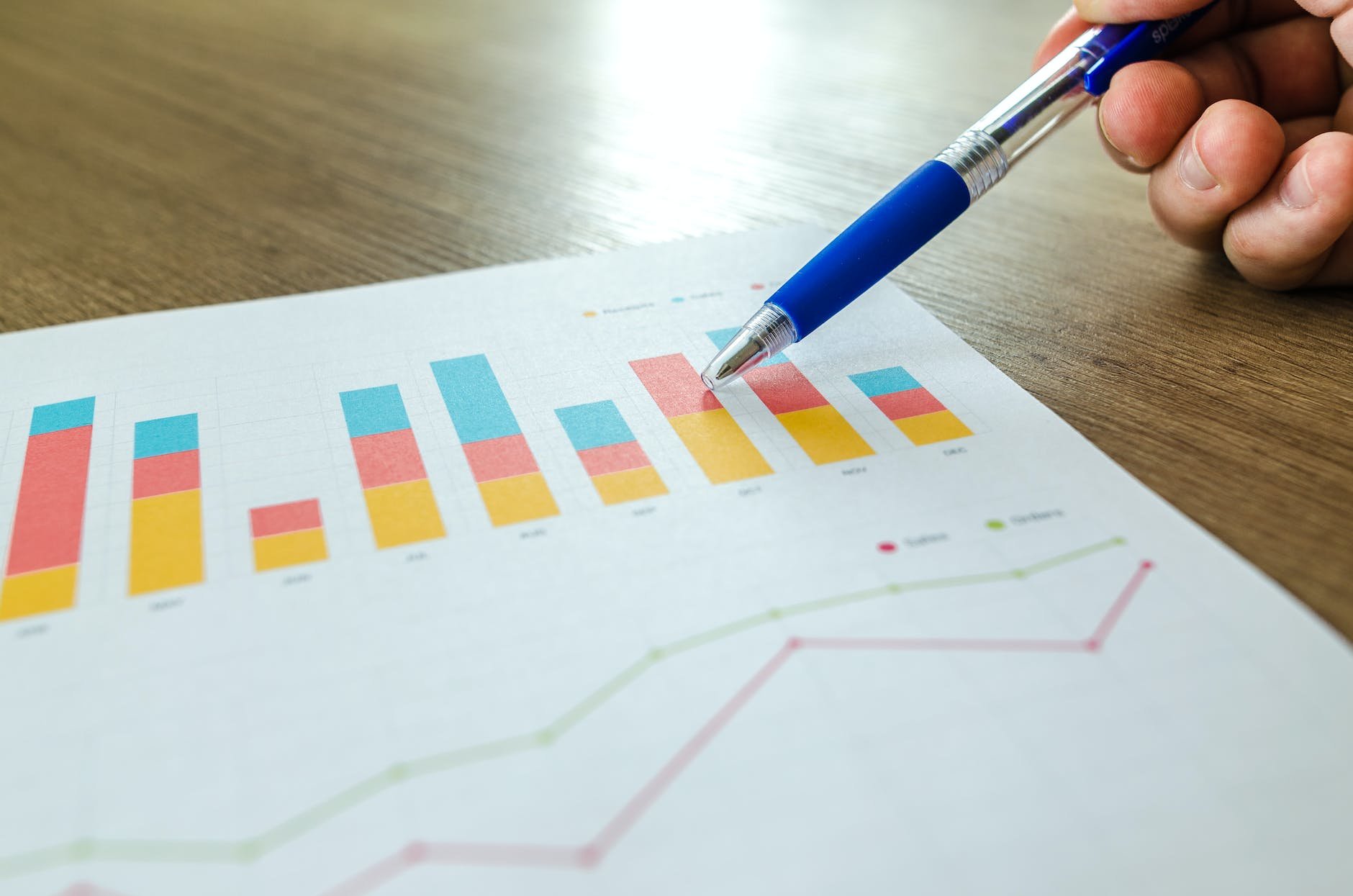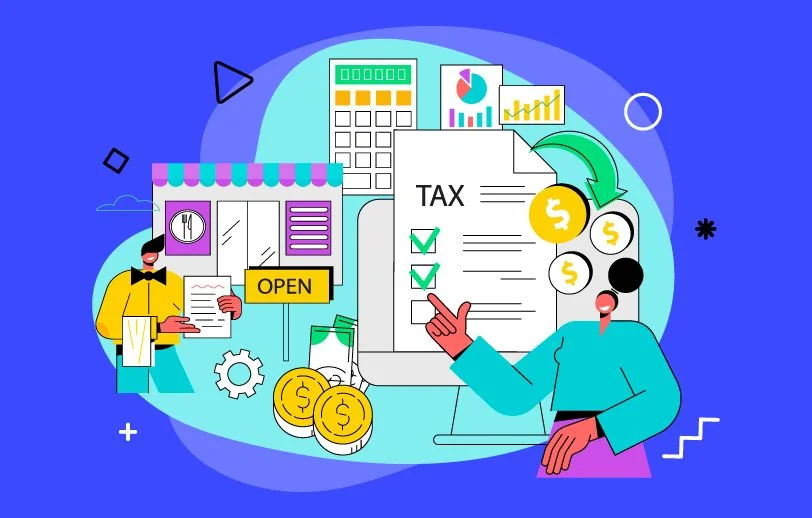Restaurant management is hard work. Among other things, it also involves tracking and reviewing a variety of different metrics that can tell you what changes to make to improve your restaurant’s profitability.
Between managing inventory, scheduling staff, and keeping customers happy, it's easy to feel like you're constantly juggling tasks. And when it comes to measuring your restaurant's success, metrics can be both daunting and confusing. According to a recent survey, 90% of restaurant owners believe that tracking metrics is crucial for business success. Additionally, a report by Upserve, found that restaurants that track key performance indicators (KPIs) are more likely to see growth in their revenue and profitability.
That's where we come in. In this article, we'll discuss the 17 essential restaurant metrics you should track and calculate, so you can evaluate your restaurant's performance. Whether you're looking to increase revenue, optimize operations, or improve customer satisfaction in your restaurant, these restaurant metrics will provide the insights you need to make data-driven decisions.

1. Cost of goods sold (CoGS)
The cost of goods sold is the total amount spent on raw materials required for preparing meals and beverages for customers. Learn more about calculating liquor cost in your restaurant.
To calculate CoGS, you’ll need to record inventory levels at the start and end of a given period (e.g., a week), as well as any additional inventory purchases. Here’s the formula for calculating the cost of goods sold:
CoGS = Starting Inventory + Purchases - Ending Inventory

Understanding CoGS is crucial for pricing menu items correctly and improving your restaurant’s profitability.
Once you know how much you’re spending on raw materials, you’ll be able to find ways to reduce these costs by doing things like negotiating better rates with vendors or focusing on using in-season ingredients.
2. Prime cost
Prime cost represents your restaurant’s two biggest expenses: the cost of goods sold and labor costs. It’s calculated by adding up these two types of restaurant operating costs:
Prime cost = Cost of Goods Sold + Total Labor Cost
Knowing your prime cost allows you to understand your expected spend for a given month. It affects a lot of things in a restaurant business, including menu pricing, scheduling, and budgeting.

3. Labor cost & labor cost percentage
Labor cost is calculated by adding up all your employee-related expenses, including:
- Hourly wages and salaries
- Employee benefits
- Payroll taxes
- Bonuses
- Overtime
Labor costs can be broken down further to help you understand front-of-house, back-of-house, and managerial employee costs.
The labor cost percentage, on the other hand, shows what percentage of your revenue is spent on labor costs. It’s calculated as follows:
Labor cost percentage = (Total Labor Cost / Total Revenue) x 100
In the restaurant industry, the average labor cost percentage is around 30%.
If the labor cost percentage for your restaurant is significantly higher than 30%, you should look into reducing labor costs through strategies such as improving scheduling and minimizing overtime.

4. Food cost percentage
Food cost percentage is the ratio between the cost of making a menu item and its selling price. To create profitable pricing for your restaurant, you need to know the food cost percentage for every item on your menu.
It’s calculated as follows:
Food cost percentage = (Item Cost / Selling Price) x 100

Food cost percentage helps you understand how profitable each menu item is. This, in turn, allows you to redesign your menu to promote your most profitable items better or eliminate the items that bring the least profit.
Looking to reduce your food cost percentage? Try these tips:
- Modify portion sizes by keeping an eye on dishes that often return to the kitchen with plenty of food left on the plate
- Design your menu around dishes that use in-season ingredients
- Join a group purchasing organization to get better deals on food supplies
5. Break-even point
The break-even point shows how much revenue your restaurant needs to earn to cover its expenses and stay in business. You can use it to determine your sales threshold — the monthly sales number you need to hit to turn a profit.
Knowing your break-even point is especially important when you’re first starting your restaurant or opening a new location.
To calculate your break-even point, you’ll need to know three things:
- Total fixed costs – These are expenses you need to cover regardless of restaurant traffic or revenue. Examples of fixed costs include your rent, property tax, insurance, licenses and permits, and employee salaries.
- Total variable costs – Costs that fluctuate based on getting more or less business. These include things like inventory costs, utilities, and wages for hourly workers.
- Total sales – Your total revenue generated from sales.
Here’s the formula:
Break-even point = Total Fixed Cost / [(Total Sales - Total Variable Cost) / Total Sales]

6. Gross profit & gross profit margin
Gross profit is what’s left after deducting the cost of goods sold from your restaurant’s revenue. It shows you how much money you have left to cover other restaurant fixed and variable expenses, as well as make a profit.
It’s calculated as follows:
Gross profit = Total Revenue - Cost of Goods Sold
Gross profit margin, on the other hand, shows what percentage of your total revenue is gross profit. Here’s how to calculate it:
Gross profit margin = (Gross Profit / Total Revenue) x 100
7. Net profit & net profit margin
Net profit is the money your restaurant makes after accounting for all expenses, including labor costs, overhead expenses, and the cost of goods sold.
The average net profit margin for restaurants ranges between 2% to 6%, and varies based on restaurant type.
Here’s the formula:
Net profit = Gross Sales - Operating Expenses
Net profit margin shows what percentage of your gross sales is net profit.Here’s how to calculate it:
Net profit margin = [(Gross Sales - Operating Expenses) / Gross Sales] x 100
These two metrics show you how profitable your restaurant is.
8. Inventory turnover ratio
The inventory turnover ratio shows the number of times your restaurant has sold its entire inventory during a specific period. Understanding inventory turnover helps prevent understocking and overstocking.
In order to calculate your restaurant’s inventory turnover ratio, you’re going to need to know the following:
- The total cost of goods sold
- Your inventory at the start of a period
- Your inventory at the end of a period
Here’s how to calculate it:
Inventory turnover ratio = [Cost of Goods sold / (Beginning Inventory + Ending Inventory) / 2]
In general, the higher your inventory turnover ratio is, the better. A good inventory ratio to aim for would be between 4 and 8, which would mean that you sell your entire inventory between 4 to 8 times every month.

9. Menu item profitability
To be able to create a highly profitable menu and run a successful restaurant, restaurant owners need to understand the profitability of each menu item.
Calculating menu profitability might surprise you — your most popular dishes might not be the ones bringing in the most profit.
Understanding how profitable each menu item is eliminates any bias you might have and gives you hard data you can work with to optimize the profitability of your overall menu and improve your bottom line.
Here’s how to calculate menu item profitability:
Menu item profitability = (Number of Items Sold x Item Price) - (Number of Items Sold x Item Cost)

10. Table turnover rate
Table turnover rate is a metric that shows the number of tables turned during a specific period (e.g., an evening).
Here’s the formula to calculate it:
Table turnover rate = Number of Guest Parties Served / Number of Tables
A high table turnover rate means that you can serve more guests in less time. Higher table turnover rates are common for fast-food restaurants, while fine dining establishments usually have lower table turnover rates but higher revenue per table.
If you find that your table turnover rate is very low, you can consider some of these tactics to get customers out the door faster:
- Limit menu size to prevent decision fatigue
- Use digital menus to speed up the ordering process
- Allow customers to order ahead when they reserve a table
11. Time per table turn
Time per table turn, as its name implies, shows you the average time a guest party stays seated at a table.
Knowing your restaurant’s time per table turn can be of great help when it comes to taking reservations and letting guests know about average wait times.
Here’s the formula to calculate it:
Time per table turn = (Number of Guest Parties served / Number of Tables) / Number of Hours
Time per table turn is usually calculated with the help of your POS system, which can track the time between when an order is first put in and when the table cashes out.
12. Average customer headcount
The average customer headcount shows you how many customers your restaurant serves during a specific period.
Knowing your average customer headcount allows you to anticipate slow and busy periods. It can also help you forecast revenue targets and cash flow, as well as improve scheduling and inventory management.
The easiest way to calculate your average customer headcount is to pull the information from your POS system.
13. Average check per customer
The average check per customer metric shows you the average amount a guest spends at your restaurant.
This metric is helpful for making revenue forecasts and understanding your restaurant’s profitability.
It’s fairly simple to calculate:
Average check per customer = Gross Sales / Total Number of Customers
Here are a few ways to improve the average check per customer metric for your restaurant:
- Train your staff on how to upsell
- Add more menu modifiers, such as extra sides and sauces, to your menu
- Offer guests the option to order dessert to take home
14. Revenue per available seat hour
Revenue per available seat hour (RevPASH) shows how much revenue your restaurant is making every hour per seat available.
Here’s how to calculate it:
RevPASH = Revenue / (Number of Seats x Hours Open)
RevPASH is a very important metric to track because it allows you to understand how effectively you’re utilizing restaurant space. Tracking this metric on a daily basis will force you to re-examine your restaurant layout and optimize it for maximum profitability.
For example, you could notice that one or more four-top tables in a particular section of your restaurant are usually occupied by just two guests during lunch or dinner service.
This might prompt you to replace the four-top with two two-tops, allowing you to serve twice as many guests. You could then use RevPASH to understand if this change resulted in a positive increase in generated revenue.
15. Revenue per square foot
The revenue per square foot shows you how much revenue you’re generating for each square foot of space your restaurant occupies. It can be helpful for understanding how profitable it might be to expand your restaurant or open a new location.
It’s calculated as follows:
Revenue per square foot = Annual Revenue / Total Restaurant Square Footage

16. Customer acquisition cost
Customer acquisition cost (CAC) is a marketing metric that shows how much it costs you to acquire a new customer.
Knowing your CAC is crucial for determining whether a particular customer acquisition method is profitable or not.
Here’s how to calculate customer acquisition cost:
Customer acquisition cost = Total Marketing Expenses / Number of New Customers Acquired
If you want to grow your restaurant business, acquiring more customers at a lower cost should be one of your primary concerns. Here are a few ways you can lower your restaurant’s CAC:
- Ask customers where they heard about your restaurant so that you can double down on your best-performing marketing channels.
- Focus on marketing channels that allow for clear marketing attribution and allow you to understand exactly what kind of return you’re getting on every dollar invested.
- Optimize your website for conversions to increase the number of website visitors that end up making a reservation.
17. Employee turnover rate
Employee turnover rate shows the frequency at which employees leave your restaurant to take on another job. It helps you understand how good your restaurant is at retaining employees.
A high employee turnover rate can be a sign of quite a few different issues, including:
- Inadequate pay
- Toxic work environment
- Unpredictable schedules
- Lack of growth opportunities
You’ll want to keep an eye on your employee turnover rate to ensure you’re not losing good workers consistently.
Here’s how to calculate it:
Employee turnover rate = Number of employees who left their job / Average number of employees) x 100
According to one study, the cost of employee turnover can be as high as $5,5864 per employee. Since it's so expensive, you should do as much as you can to reduce a high employee turnover.
Here are a few things you can try:
- Conduct exit interviews to learn why employees leave
- Implement employee recognition programs to help employees feel more valued
- Make sure you provide competitive compensation
- Optimize schedules and workloads to prevent burnout
Improve your restaurant’s profitability with these metrics
You’ve reached the end of the list. Here’s what to do next:
Scan through the list one more time and note down any restaurant performance metrics you’re not already tracking. Create a plan on how to start tracking each of the metrics you’re missing, and then get your team to help you execute.
FAQs
What is the difference between restaurant metrics and KPIs?
Restaurant metrics are data points used to measure various aspects of your restaurant's performance. Key Performance Indicators (KPIs) are specific, high-impact metrics that are crucial for tracking and improving your restaurant's overall success.
How is restaurant quality measured?
Restaurant quality can be assessed through various approaches, including:
- External experts: Esteemed organizations like Michelin, Gault Millau, and AAA Diamonds provide expert evaluations and ratings based on criteria such as cuisine, service, and ambiance.
- Customers' reviews: Customer feedback posted on platforms like Yelp, Google My Business and TripAdvisor offers valuable insights into the dining experience. Positive reviews often indicate a high-quality restaurant.
- Reviews by culinary critics: Culinary critics may conduct in-depth reviews and analyses, offering assessments of a restaurant's culinary offerings, innovation, and contribution to the culinary field.
These various approaches, combined with factors such as food quality, service, ambiance, cleanliness, value for money, and more, collectively contribute to the overall assessment of a restaurant's quality.
Further reading:

Boris Mustapic is a content marketer with a decade of experience in the digital marketing industry. He specializes in helping B2B SaaS companies drive growth through strategic, product-led content marketing.
More about the author